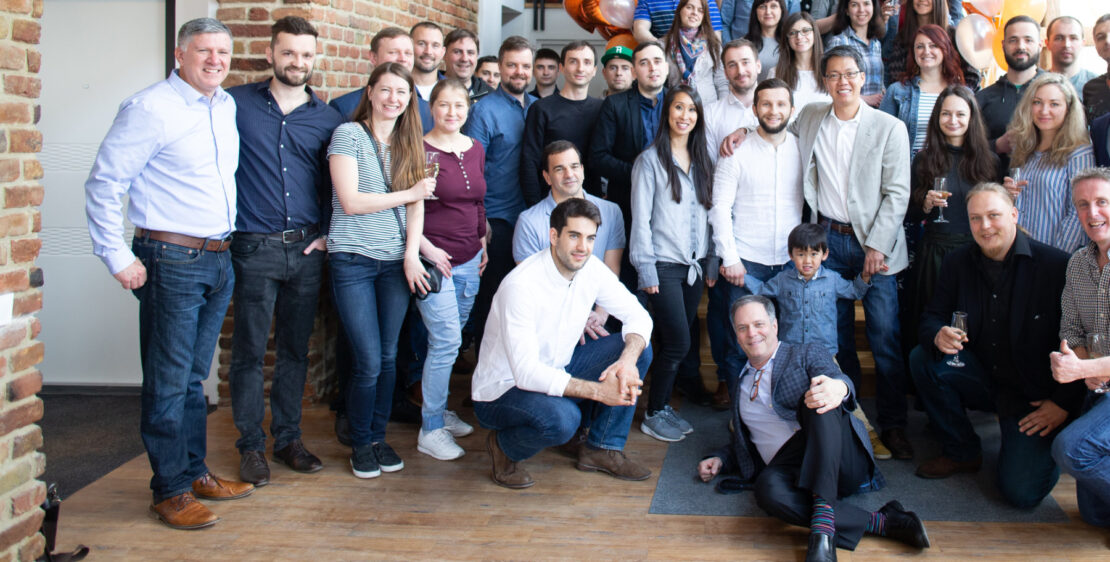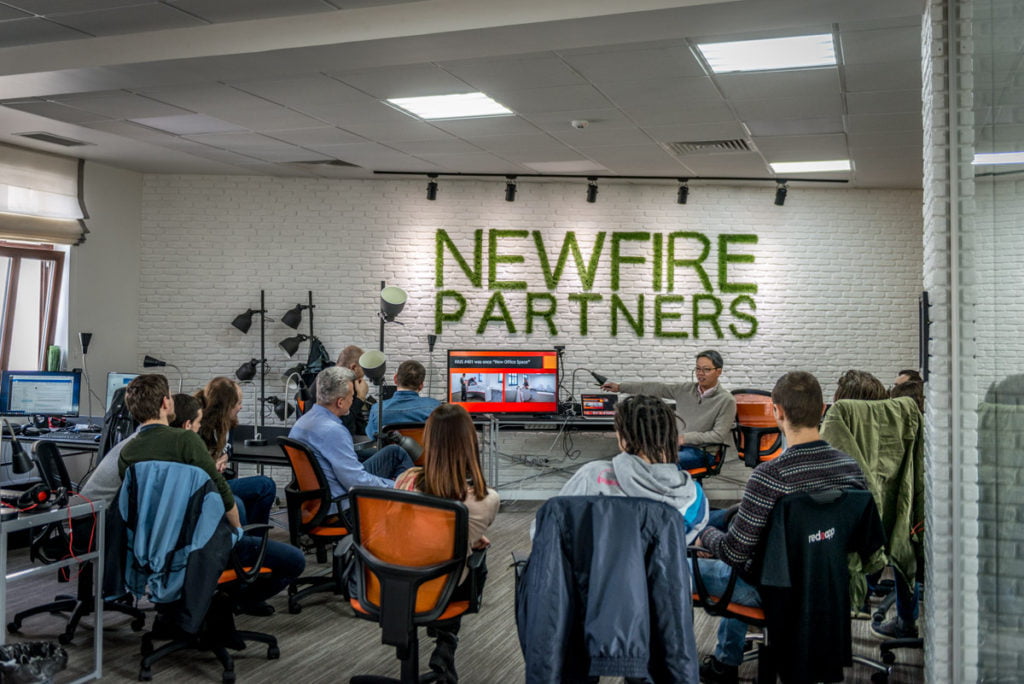
The purpose of this blog entry is to update you on the last few years of my life, share the story of the creation of Newfire Partners.
A few years ago, my wife became pregnant with our son, and I had an opportunity to take some time off from working. Becoming a parent is an awe-inspiring, life-changing event. The experience was especially profound for me because it happened later in life and soon after my father had passed away.

After about 20 years of the rollercoaster ride of company building, attempting to disrupt markets with innovative ideas and sometimes chasing windmills, I was looking forward to taking a significant break.
At least, that was the plan. I did not expect to be starting another company.
Hanging Out with the ‘Crazy Ones’
It began innocently enough. I had spent many years at the crossroads of technology and new venture creation, which is a neighborhood heavily populated by the “crazy ones” (the people Steve Jobs famously applauded): entrepreneurs, technology wonks, venture capitalists willing to make “bets,” risk-takers. My kinda people!
It was totally normal to socialize over coffee, breakfasts, lunches, dinners or drinks, and share ideas, gossip and brainstorm about various business puzzles.

Somehow, giving free advice (yes, you get what you pay for!) while packing on calories quickly morphed into formal consulting engagements. Soon, I found myself invited to help out in interim CEO/COO/CTO positions, advisory roles and a board appointment.
My first clients were large private equity firms in life sciences. Then, I started to work with VC-backed portfolio companies and even a wildly-successful family-owned business. Most of my projects were software-oriented, but a few were in other areas, like medical devices and professional services.
All told, the collaborations were incredibly meaningful and often inspiring.
Each client had its own unique set of challenges. For example, traditional biotech companies were starting to dabble in software product offerings to diversify their businesses, get “beyond the pill” and navigate the increasing influence of consumerism. However, they frequently lacked a suitable understanding of how software products get built. Instead, they thought in terms of drug development. (Long but highly structured delivery cycles vs. short sprints with incremental progress and lots of retrospection. Very different.)
Meanwhile, many conventional services businesses were beginning to focus on “technology-enabled services” to become more competitive and financially compelling. Although these leaders deeply understood their traditional services, they did not understand technology or how to manage its lifecycle. (You must account for ongoing “care and feeding” of the software and ownership of intellectual property.)
While my clients faced different types of challenges, three interesting similarities stood out:
- Lack of access to solid engineering talent: Recruiting is one of the biggest problems for companies that suddenly receive funding or win large contracts. They may not have the manpower to make their plans or meet their sales commitments. In some cases, the companies are in regions with limited development talent (e.g., the American South). In other cases, they’re in hyper-competitive regions where strong talent can be prohibitively expensive and nearly impossible to find (e.g., Boston).
- CEOs without a technology leader or technology co-founder: There are compelling businesses with very capable CEOs or founding teams that don’t actually know how commercial software gets built. They lack a technology partner on the management team to demystify the software development process, make the correct “Goldilocks” (just enough) architectural decisions and define simple metrics so management teams can make plans based on credible product forecasts.
- Investors without a strong tech background: Some early-to-mid-stage companies may have a board of directors with “Masters of the Universe” profiles but without the technology background to evaluate or challenge management’s plans, budgets and proposals. This limits their effectiveness in terms of governance and assisting the CEO.
The good news? These were all solvable problems, and I had a lot of relevant experience and good people to leverage.
During these engagements, I often felt like a matchmaker, helping friends connect with each other. On one hand, I had a sizable pool of trusted engineering talent eager to find cool, innovative projects. On the other hand, I had business leaders wanting to de-risk projects with handpicked teams that were ready to help ship product.
The Addition of Advisory Services
Over the years, I’ve worked with many U.S. teams as well as offshore teams from around the world. The Eastern European developers are some of my favorite because the really good ones are true craftsmen who take tremendous pride in their work. They’re logical and fact-based, and they point out problems early, which is key for remote teams. (“See something; say something.”)

The real magic happened when we paired IT consulting and advisory services with these handpicked teams. When necessary and appropriate, I helped place a part-time, acting CTO or similar role to serve as a partner to the CEO and leadership team. The acting CTO helped define success, established realistic plans and budgets, recruited the development team, assembled top-notch software development operations by implementing aggressive Scrum practices, and generated metrics and dashboards to give the company’s business leaders visibility into progress against plan. The acting CTO could remain indefinitely or transition to the go-forward, permanent CTO, who would inherit a well-tuned system with an established operating history.
More recently, I’ve started to make modest investments in some clients’ companies, ensuring a long-term alignment with regard to shareholder success.
As our son started to take his first steps, what started as just some fun became Newfire Global Partners — a growing IT services and software development company making an impact and helping to bring innovation to market. We’ve set up centers of operation in Ukraine, planned for expansion into other regions, formed management teams and advisory boards, began marketing to get the word out and (as of today) published a blog post! 🙂
Hello, World!